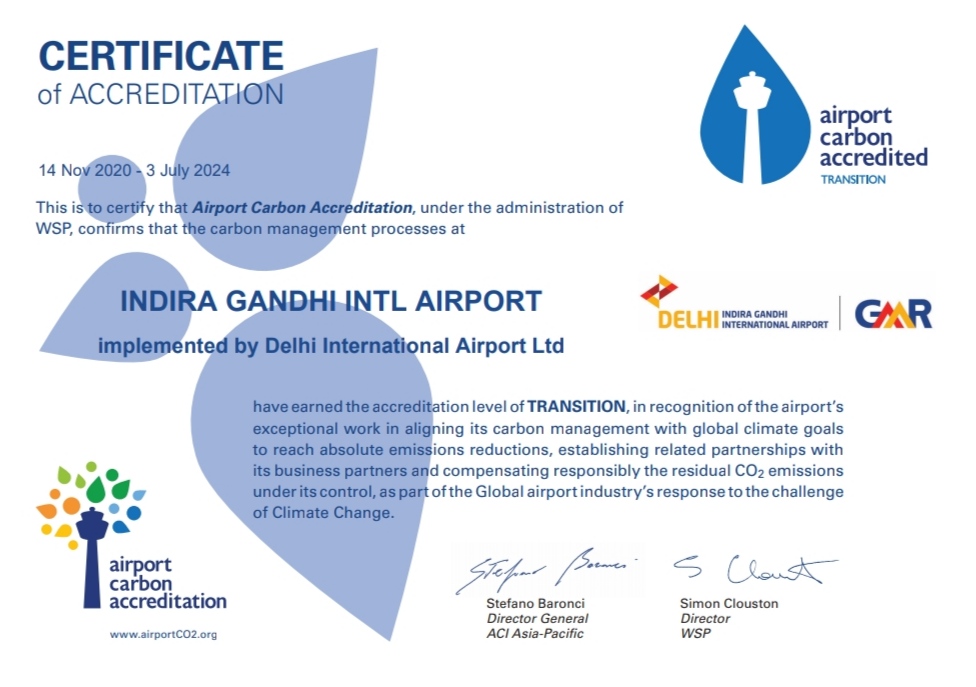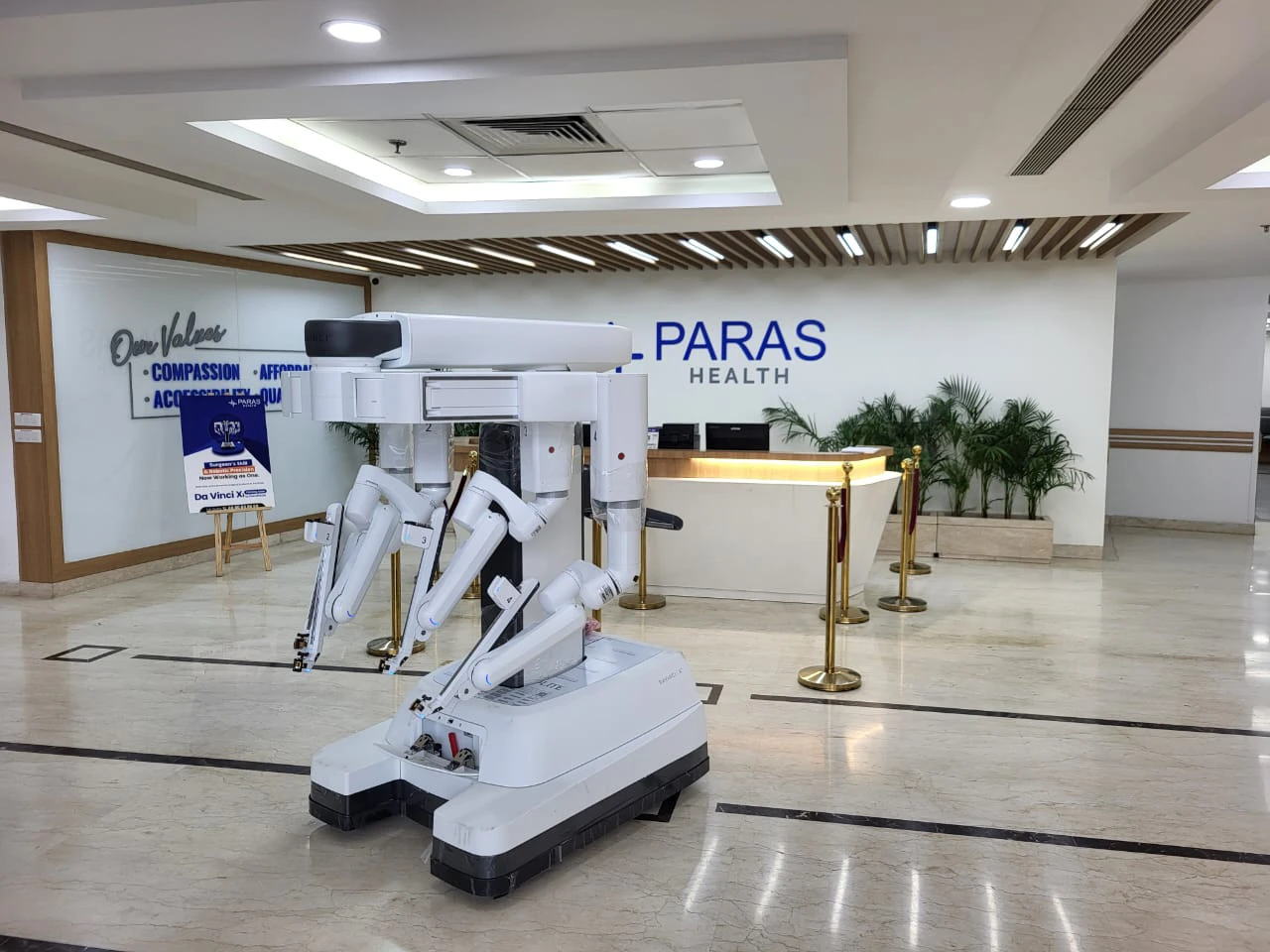Delhi Airport becomes 1st airport in Asia Pacific Region to achieve Level 4+ Accreditation under ACI’s Airport Carbon Accreditation
3 min read
New Delhi, Nov 18:
GMR led Delhi International Airport Limited today announced that it has become Asia Pacific’s first Level 4+ (Transition) accredited airport under ACI’s Airport Carbon Accreditation program. The announcement was made by ACI on 17th November during the ACI EUROPE Annual Assembly & Congress.
Airport Carbon Accreditation is the global standard for carbon management in the airport industry. It aims to encourage and enable airports and its stakeholders to implement best practices in Greenhouse Gas (GHG) management and achieve emission reductions.
The Airport Carbon Accreditation programme of ACI was launched in 2009. Initially had 4 Levels- “Level 1: Mapping”, “Level 2: Reduction”, “Level 3: Optimisation” and “Level 3+ Neutrality”. Delhi Airport reached “Level 3+, Neutrality” in 2016, as the first Carbon Neutral Airport in Asia Pacific region. This was the highest level of accreditation at that time and DIAL has maintained “Level 3+, Neutrality” accreditation since then.
In 2020, ACI had revised the program’s Levels and added two new levels, Level 4 (Transformation) and Level 4+ (Transition). These two Levels have been introduced to make the programme objectives in line with Paris Agreement and to limit the increase of global average temperature to 2°C above pre-industrial levels and aim to not exceed 1.5°C. This is also in line with IPCC’s recommendations & ICAO’s Aviation Climate Change mitigation objectives. . Level 4+ encourages airports to reduce their emissions as per the latest scientific developments and meet to stakeholder expectations.
Videh Kumar Jaipuriar, CEO, DIAL, said, “Achievement of the Level 4+ accreditation is a testimony of our commitment towards ensuring sustainable development at IGIA. Going forward, we will continue to develop best in class infrastructure and provide services using innovative and sustainable technologies. Our aim is to achieve “net zero carbon emission” airport by 2030, following the Airport Carbon Accreditation guidelines. With this achievement, we have set up new benchmark for other airports in this region to follow.”
“The current crisis is accelerating the process of the aviation sector’s transformation. Sustainable growth, in line with the Paris Agreement’s target to progressively decarbonize the environment, is an essential part of this process. Delhi’s Indira Gandhi International Airport is raising the bar in Asia-Pacific by becoming the one of the first airports in the world to obtain the new important Airport Carbon Accreditation Level 4+ Transition accreditation,” said Stefano Baronci, Director General, ACI Asia-Pacific.
At IGIA, DIAL has taken various proactive initiatives towards environment management and sustainability. Programs such as renewable energy use (both onsite and offsite), development of green airport Infrastructures,energy conservation & efficiency improvements and stakeholder partnership programs etc. are being implemented.. Other energy efficient and environment friendly infrastructures at the airport include electric vehicle charging facility, state of the art Sewage Treatment Plant (STP) and Water Treatment Plant (WTP), energy efficient lighting systems, advanced fuel hydrant systems, Bridge Mounted Equipment (BME) such as Fixed Electric Ground Power Units (FEGP) and Preconditioned Air (PCA) supply systems.
In addition to this, DIAL is also making technological advancement such as adoption of Electric vehicles and Taxibots. Taxibot (a semi-robotic vehicle, and is used as a means of taxiing the plane to the runway) at Delhi Airport was adopted in 2019 for commercial operation and is the first airport in the world to take up this initiative. Adoption of Taxibot has resulted in reduction of significant amount of aviation turbine fuel consumption by Aircrafts for ground movement.
Furthermore, DIAL is also in the process of commissioning various operational infrastructures and multiple passenger connectivity networks around the airport which will further help in achieving the ambitious target of becoming net zero emission airport by 2030.










